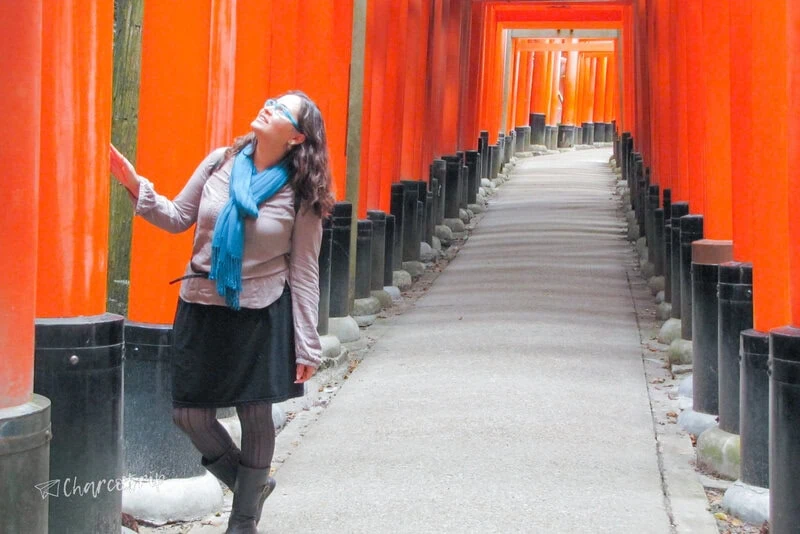Discover the beauty of Japan! Learn to travel on your own and make your trip a memorable experience with this comprehensive guide to Japan.
Are you planning a trip to Japan? This complete guide to Japan will provide you with the tips and tricks you need to travel on your own and enjoy the experience to the fullest. From getting around, finding hotels and restaurants, understanding cultural differences, and having fun, this guide will make sure all your questions are answered. With these tips, you will be well-equipped for your Japanese adventure.
Contents
- Japan guide: planning your trip
- What is the best time to travel to Japan?
- How long should my first trip to Japan last?
- How much does it cost to travel to Japan?
- Requirements to travel to Japan
- Time difference
- What type of plug is used in Japan?
- Currency
- What suitcase to take to Japan?
- What do I need to do to have internet in Japan?
- Japan guide: how to get there and get around
- Japan guide: accommodation
- Japan Guide: What to see and do?
- Japan guide: gastronomy
- Japan guide: useful tips and recommendations
- Japan Guide: Shopping
- Japan Guide: Dare to go!
Traveling to Japan, a dream for many, the country of the rising sun has been present very early for many of us. Luckily, we have had the opportunity to go several times, the last being in 2023, and we have already gone through several stages:
- See the country for the first time and be surprised by almost everything.
- Going back to the country and meeting things that still seem different to you.
- Going back to Japan and feeling that there are things that you’re already needing because you have already integrated them into your life.
When you reach the third stage, I’m sorry to say, you’ve become addicted to Japan and the only possible treatment is to go back!
Do you want to feel like you were in those cartoons you used to watch in your childhood? Well, all you have to do is come to Japan, a country where the friendliness of the people is to be admired, punctuality is omnipresent and all the good things you expected to see are more than surpassed. Beyond expectations.
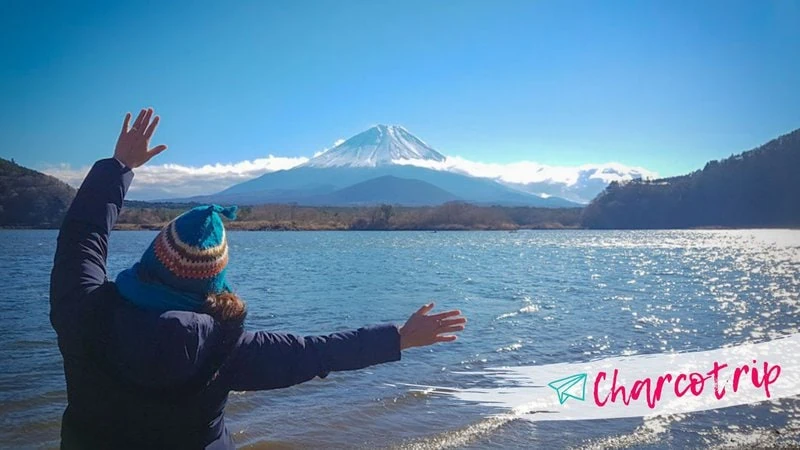
Japan guide: planning your trip
What is the best time to travel to Japan?
As I have already told you, for example, in the tips for traveling to Europe, the best time to travel to a place will depend on your preferences. That is, there is no absolute and correct answer.
Instead of giving a single answer, keep in mind that Japan is a country where the four seasons of the year are well-defined (unlike my native Mexicali, where autumn and spring last just two weeks).
That said, let’s see what each season has to offer:
Spring
(March to May) If you like mild weather and want to see cherry blossoms, spring is the best time to visit Japan. The famous season, known as hanami (花見 / はなみ), is a special time for the Japanese and is an incredible sight for tourists. The disadvantage at this time is when prices rise due to the increased demand for accommodation and other services. Also, if your trip coincides with golden week, be prepared, since it is a time when practically all of Japan is traveling.
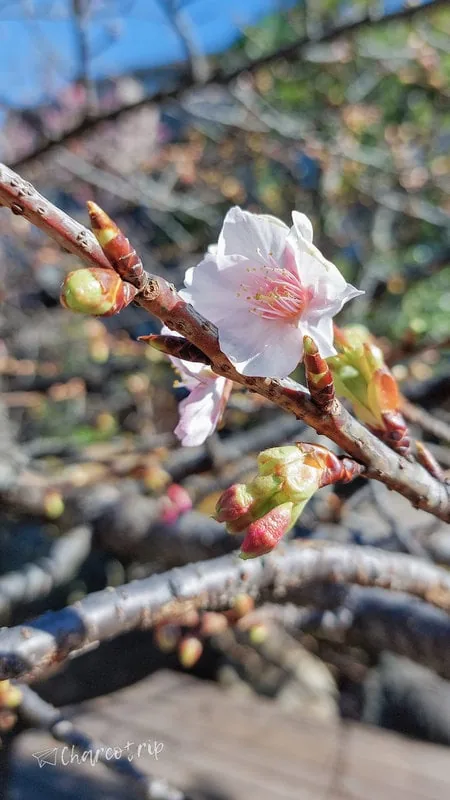
Summer
(June to September) If you want to see the many festivals that take place in Japan during the summer, this is your time. However, you should be aware that during the summer it can be very hot and humid in some parts of the country.
I have to make a break between summer and autumn, you have to be aware of the typhoon season, which generally occurs between these two seasons. It already happened to us that because of a typhoon, we had a delayed flight (and let’s say that this was a minor problem).
Autumn
(September to December) If you like fall colors, this is a great time to visit Japan. The landscapes are dyed red and the temperature is pleasant, it’s not hot anymore, and can be a little cold, but it’s not necessary to bring a huge jacket, a light sweater is enough.
Winter
(December to February) If you prefer cold weather and snow, winter is a good time to visit Japan, especially if you want to see the snowy landscapes and save money, since prices are kept low during this season (except New Year). You can also enjoy winter festivals, such as the famous Sapporo Snow Festival.
In our case, the trips we have made range from September to January. That means that, in person, we’ve had the opportunity to know the autumn and winter.

How long should my first trip to Japan last?
As always, the answer will depend on the days you have available and your budget. And to give you an example, when we made our first trip to Japan it took 8 days of travel (I am not considering air travel where one day is lost on the way there and back).
In contrast, while we made that first trip we met a friend of Vincent, who was also making his first trip to Japan and his trip lasted five weeks! And if you asked us if we had wanted to take a five-week trip to Japan, we would say yes, of course! But at that time we didn’t have more time.
That said, on average for a first trip, keep your hand down, it is recommended that the trip last at least 7 to 10 days to get to know the most important things in the country.
If you only have one week: Focus on one or two cities, for example, Tokyo and Kyoto.

How much does it cost to travel to Japan?
The cost of your trip to Japan will depend a lot on the season in which you travel. As I told you before, traveling during the spring will be more expensive than traveling during the winter (but of course, those sakura blossoms are beautiful!).
That being said, here is some general information to give you an idea of what your trip to Japan could cost you:
Flights
Prices vary depending on the season, airline and where you travel from. In general, round-trip flights from Latin America, or from Europe, to Japan can cost between $800 and $1,500. Search for your flights here and take note of our tips to find cheap flights.
Hosting
The average cost of a double room in a standard hotel is between $50 to $100 per night. If you want to find something for less than $50, and you’re traveling alone, you might want to look into a capsule hotel. Ryokans and luxury hotels can cost well over $100 per night. Find your cheap hotels here.
Food
The cost of food in Japan can be quite cheap, depending on the type of restaurant you choose. At ramen and tsukemen places, you can eat delicious food for around 1,000 yen. At chains like Yoshinoya, you can eat for much less. Typically, the cost can range from $5 to $10 for an inexpensive meal. If you prefer restaurants with more expensive food, such as shabu-shabu, keep in mind that the cost will be much higher.
Transportation
The cost of a subway or bus ticket in major cities in Japan is approximately $1.5 to $3 per trip. If you plan to take the Shinkansen train, prices can range from $80 to $150 per trip, depending on the distance. If you will be using the train several times during your trip to Japan, consider purchasing a Japan Rail Pass. Here I tell you how to take advantage of it.
Tourist activities
The cost of tourist activities varies depending on the activity you choose. For example, the cost to enter the Senso-ji Temple in Tokyo is free, while the cost of a ticket to the Disney Theme Park in Tokyo can range from $50 to $100.
Don’t worry though, not all theme parks are this expensive, for example, the Toei studio in Kyoto or the Sanrio Puroland park cost around $20 per person.
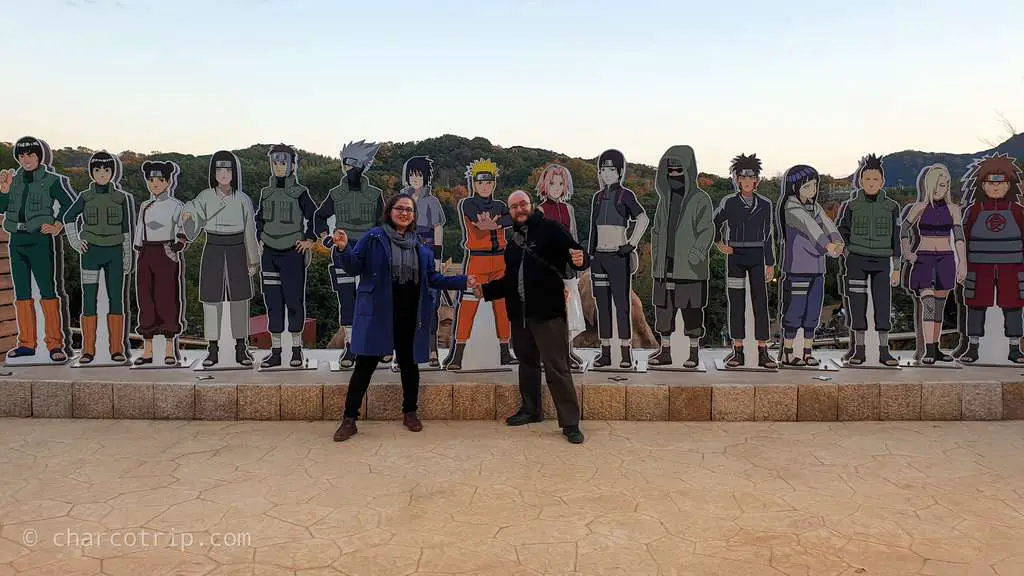
Requirements to travel to Japan
Is a visa required?
The passports of the European Union and several countries in the Americas, including Mexico (yippie!) do not need a visa to go to Japan as tourists, when you arrive they put a sticker on a page of your passport and when you leave they stamp it. That sticker will say that we are “temporary visitors” and will mark the deadline for our stay, which is 90 days.
The countries of America that do not need a visa for Japan are:
| Canada | Costa Rica |
| United States of America | Dominican Republic |
| Mexico | El Salvador |
| Argentina | Guatemala |
| Bahamas | Honduras |
| Barbados | Suriname |
| Chile | Uruguay |
Check here, if you need a visa.
What else is necessary to be able to travel to Japan?
Before your trip you must register on the Visit Japan Website, have your passport, your flight information at hand and certificates of your last three doses of WHO-approved vaccines or have a Negative Test Result of less than 72 hours.
Going through customs
When you arrive in Japan (on other occasions they gave it to us on the plane), you will fill out a form to clear customs. This will happen after you go through immigration and pick up your bags.

Time difference
When traveling to Japan from Europe, the time difference is 7 hours ahead. Regarding Mexico, Japan is 15 hours later (CDMX time).
Here the advice is to try to adjust as soon as possible to the time of the country of arrival and another advice, if time permits, is: on the first day and the last day of the trip, try not to make the program too busy. So that you are not too tired getting there and on the way back.
What type of plug is used in Japan?
In Japan, the type of plug used is Type A, which is the same as that used in several countries in the Americas. This plug has two parallel flat blades and works with a voltage of 100 volts.
If your country uses a different type of plug, you’ll need an adapter to be able to plug your electronic devices into Japanese power outlets. Make sure you bring a suitable adapter to avoid any inconvenience during your trip.
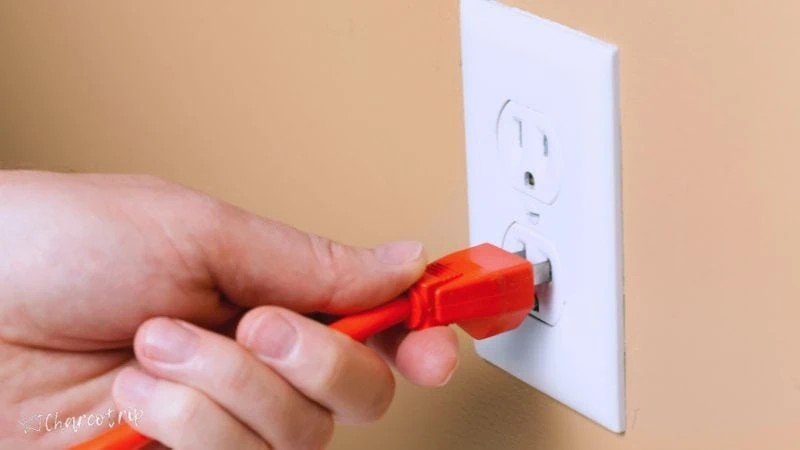
Currency
The official currency is the YEN. If you want to arrive with some yen, you can exchange money beforehand, but you don’t need to arrive with all the money you will need on your trip. You can withdraw money from the ATM effortlessly, both in banks and in convenience stores (for example: Lawson, Seven11, etc.).
If you don’t want to pay so much in commissions, I recommend using cards like N26 or Revolut.
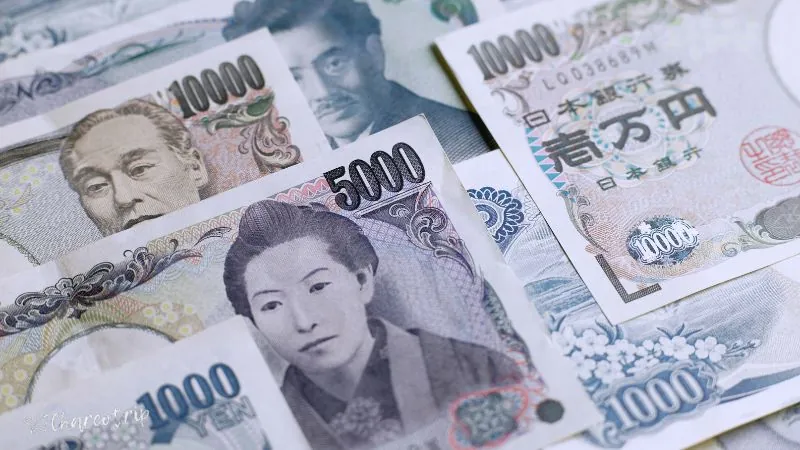
What suitcase to take to Japan?
For the time we were there, it was more than enough for me with my 40-liter backpack or my cabin-shaped suitcase.
Here are some tips to save space in your suitcase:
- See if the hotel where you are staying (in our case all three had one) has a laundry service, if the answer is yes, in that case, you can really take half or two thirds of the clothes you plan to take. You can wash there, and your luggage will be less heavy.
- It is a waste of space to take your slippers from home, since in all hotels there are already some in the room. In almost all cases, they are for use only in the room (and when they can be taken as a souvenir they write it down, so if it doesn’t say anything, leave them there). The thing is that I made the mistake of taking my slippers (in other places it is not a mistake, but in Japan it is), result: they never left the backpack.
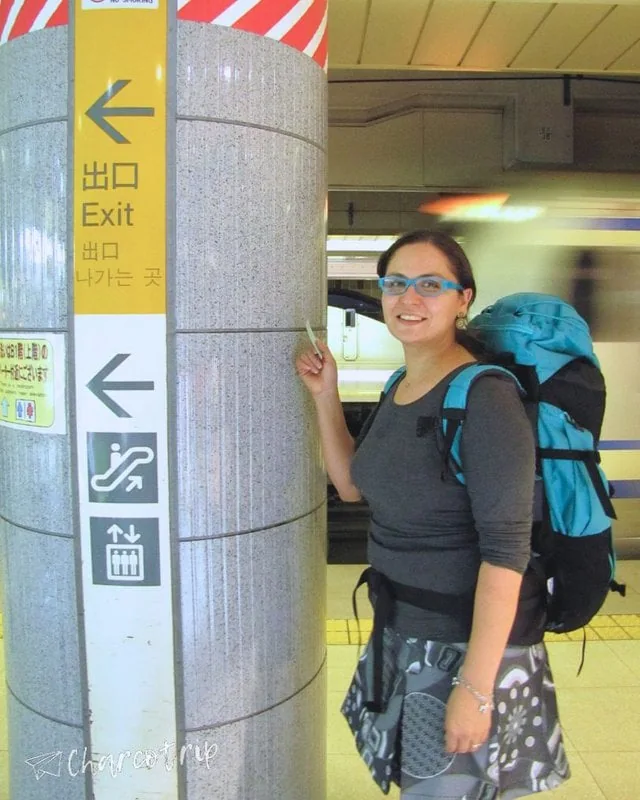
What do I need to do to have internet in Japan?
Being connected will be very useful to you, this is even more valid in Japan, since you will need to use travel apps to translate, maps or to convert currency, to name a few.
There are many free Wi-Fi hotspots in big cities like Tokyo, but the best thing is to always have a connection: either a pocket wifi device or a SIM or eSIM card to always have internet available.

Japan guide: how to get there and get around
How to get to Japan?
To get to Japan, the most obvious option is by plane, the country’s main airports are Narita International Airport in Tokyo, Kansai International Airport in Osaka, although there are also Haneda Airport in Tokyo, Fukuoka Airport and the Chubu International Airport in Nagoya to mention a few.
It seems that it is the only way to get to Japan, but it is not. It can also be reached by boat from nearby countries such as: Russia, South Korea, Taiwan or China.
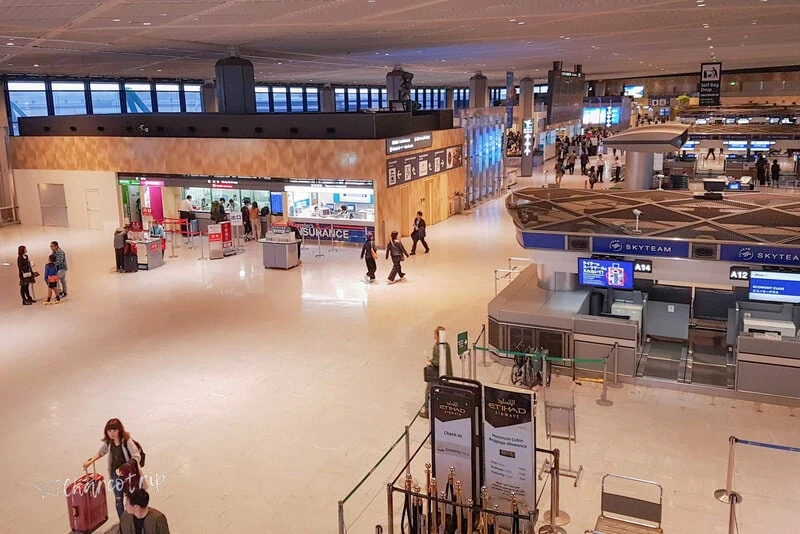
How to move within Japan?
Within Japan to move, you can use the efficient Shinkansen, which prides itself on having an average annual delay of less than a minute. Along with them, there are other trains, slower, but no less efficient, either the regional trains of JR (Japan Railways) or trains of other companies, for example Tobu.
In addition to the trains, you can travel by bus, which, depending on the route, can be cheaper than the Shinkansen, just keep in mind that it takes much longer to arrive.
If you plan to move by train and want to compare prices with the bus, consider that you can purchase the Japan Rail Pass which will perhaps make the train cheaper.
Within the cities there is a great variety of transport, such as the metro, suburban trains, trams and urban buses.
In big cities like Tokyo, the rail and subway transportation network can be complex and intimidating, that’s why we prepared this little guide: How to use the Tokyo subway?
An interesting fact: in many cities, you must get on the bus from the back, and pay your ticket when you get off from the front. If you have doubts, watch how the locals do it.
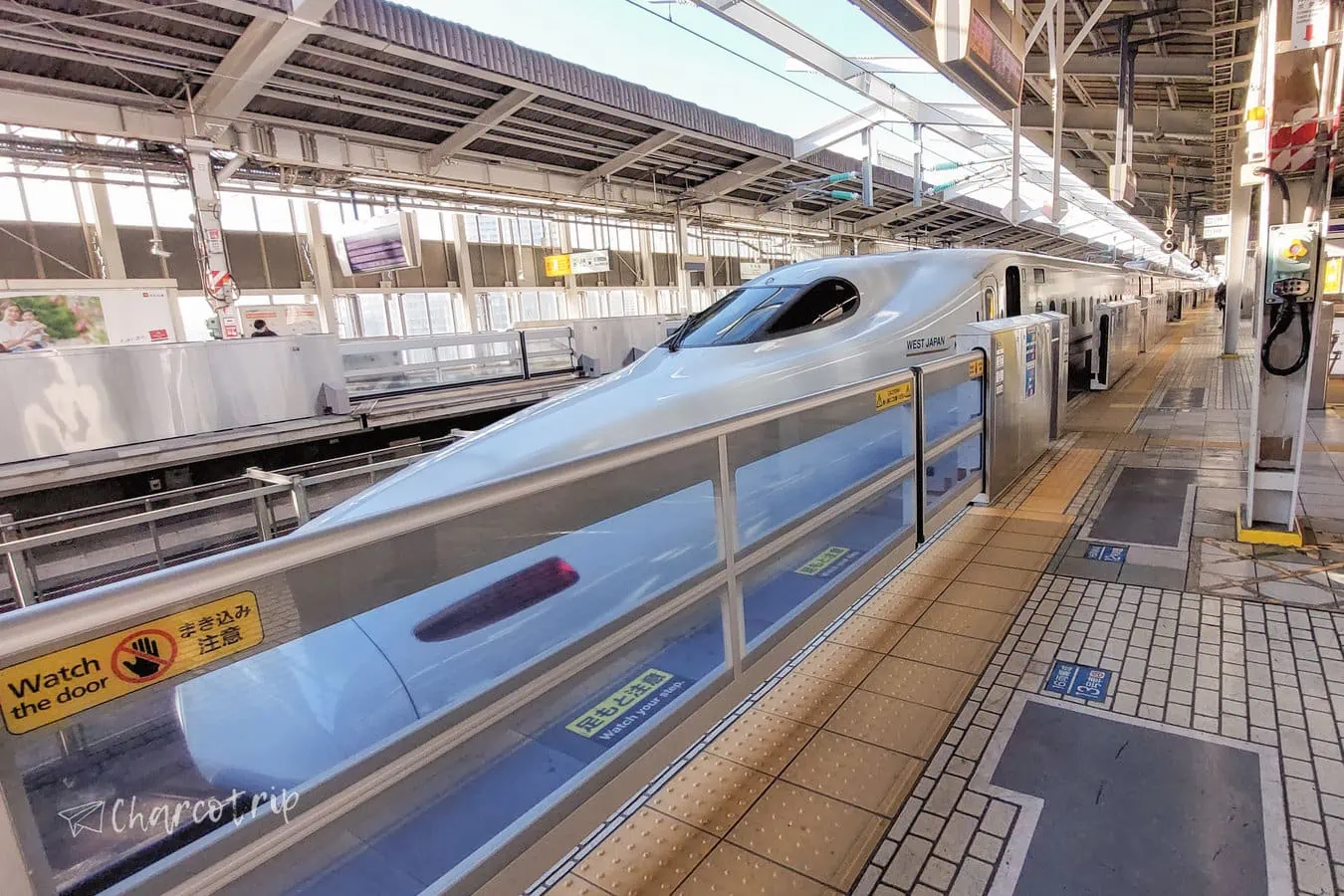
Use of Japan Rail Pass
Shinkansen trains are efficient, punctual, clean, what more could you ask for? The drawback is that they are expensive, but don’t panic! Tourists have the advantage of being able to purchase the Japan Rail Pass.
This pass allows you to travel on all JR (Japan railways) transport for 7,14 or 21 days (we will dedicate a separate article to it). It worked very well for us.
Are you traveling to Japan?
Don't forget to get your Japan Rail Pass!
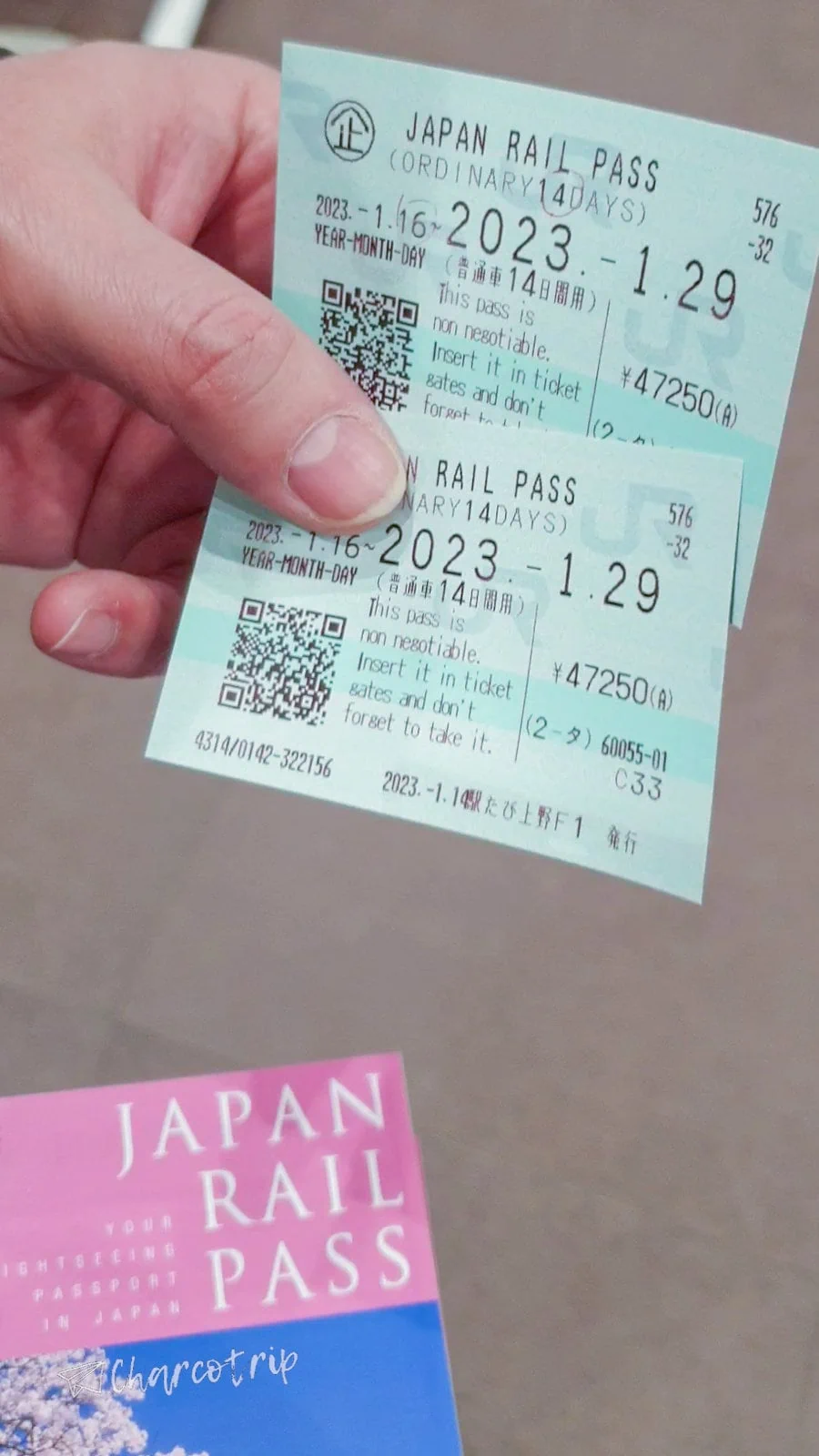
Japan guide: accommodation
Types of accommodation available
In Japan, there are several accommodation options, depending on your budget there are some options that you have to evaluate carefully.
Here, I will show you the types of accommodation with their price range, knowing that you can always find a more expensive accommodation in that category.
¥ = cheap, ¥¥ = cheap or normal, ¥¥¥ = expensive
Hotel (¥¥): These are the most common accommodation option in Japan and can be found throughout the country. There are hotels of all categories, from budget hotels (¥¥) to luxury hotels (¥¥¥¥). In general, hotels offer rooms with a private bathroom, although you may find one with a shared bathroom.
Ryokan (¥¥¥): These accommodations are traditional inns that offer a unique and authentic experience. Ryokans usually have rooms with tatami mats (straw mats), futons to sleep on (it can hurt your back a bit), and hot spring baths (onsen). They also often include traditional Japanese foods, such as kaiseki.
Hostels (¥): These are a cheap accommodation option in Japan and are popular with travelers looking to meet other travelers and share experiences. Hostels often offer shared rooms and shared bathrooms (and in Japan, you can trust it to be clean, but always look at reviews from other travelers).
Capsule Hotel (¥): These are compact, inexpensive accommodations that have become very popular in Japan. The capsules are individual rooms with a bed, a television and a space to store personal belongings. Bathrooms are often shared, and areas are separated by gender.
Apartments (¥¥): These are a good accommodation option if you plan to stay in Japan for a longer period. The apartments are usually furnished and equipped with a kitchen and a private bathroom.
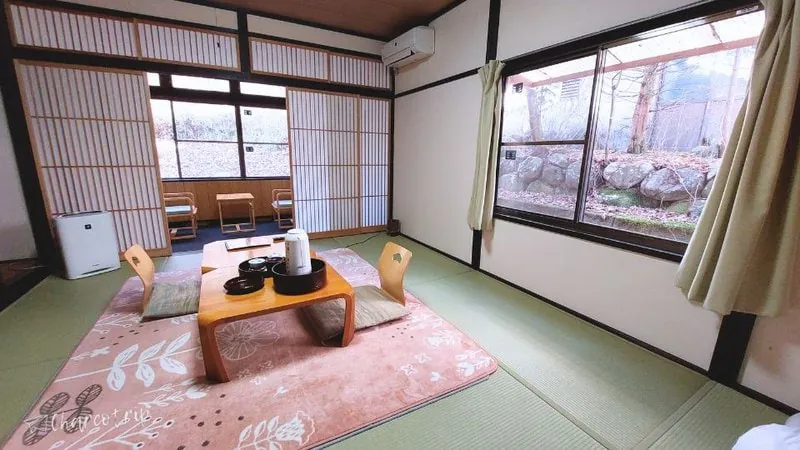
Hotels we have stayed in
Tokyo
- Toyoko Inn Tokyo Akiba
- Agora Place Tokyo Asakusa
- APA Hotel Asakusa Kaminarimon Minami
- APA Hotel Asakusa Kaminarimon
Kyoto
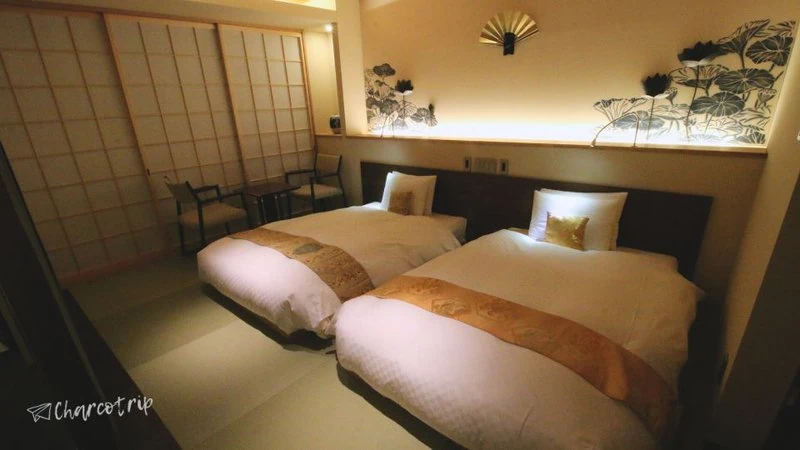
Osaka
Nagano
Nikko
Fukuoka
Japan Guide: What to see and do?
Main cities
Tokyo
Tokyo is one of the most vibrant and exciting cities in Japan, although it is also one of the most densely populated. There are numerous things to see and do here that will keep you entertained, which is why spending 7 whole days in this city doesn’t sound crazy.
One of the must-see places in Tokyo is Shibuya Crossing, which is well-known for its crowds of people crossing the road at once. Another popular attraction in Tokyo is Tokyo Tower, an imposing structure that offers stunning views of the city. Visitors can take an elevator to the top and enjoy panoramic views of the Tokyo skyline. For those interested in Japanese culture, a visit to Asakusa should not be missed. This traditional district has many temples and shrines, as well as souvenir shops offering traditional Japanese goods.
Finally, no trip to Tokyo would be complete without trying authentic Japanese food. From sushi to ramen and everything in between, visitors can find delicious foods around every corner. A popular area for foodies is Tsukiji Market, where you can find fresh seafood every day, you can even take food tours.
The list of places to visit in Tokyo is enormous, before you have to define which neighborhoods you will visit during your trip to later be able to define the places you want to visit, I will clarify this and other doubts in the tips for traveling to Tokyo for the first time.
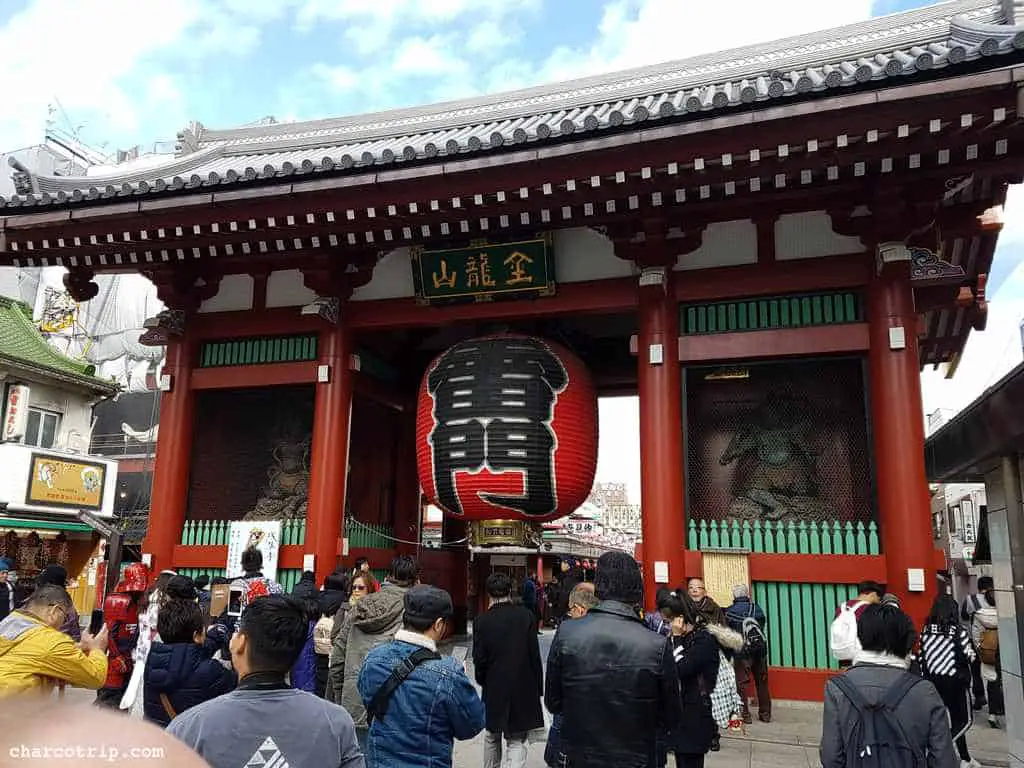
Kyoto
Kyoto is a city that captures the essence of traditional Japanese culture. From its impressive temples and shrines to its historic neighborhoods, Kyoto is a must-see destination for your first trip to Japan, and one of the best ways to get in touch with it is to take a free tour.
One of Kyoto’s most popular attractions is the Fushimi Inari Shrine, which features thousands of bright orange torii gates winding down a mountain path. You can perfectly go to this and all the temples on your own, but if you prefer a guide to explain what you see in the place, you can take a guided tour. Another iconic site in Kyoto is Kinkaku-ji Temple, also known as the Golden Pavilion, with its shimmering golden exterior surrounded by peaceful gardens.
Beyond its historical landmarks, Kyoto also offers plenty of shopping and dining opportunities. In addition, with so much traditional landscape, here is a perfect place to wear a kimono, we will tell you here what the experience of wearing a traditional kimono is like.
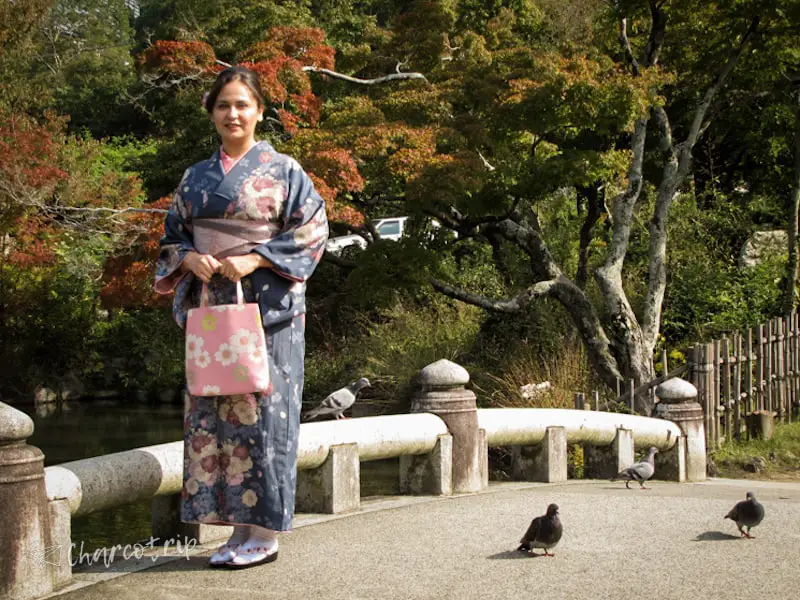
Osaka
Osaka is one of the largest cities in Japan and is known for its vibrant nightlife, delicious street food, and historical landmarks. If you’re looking to experience Japan in a different light than gigantic Tokyo or traditional Kyoto, then Osaka should definitely be on your list. A visit to the famous Osaka Castle is a must, as it provides an insight into Japan’s rich history.
Another attraction not to be missed is the bustling Dotonbori district. Here you can enjoy the best street food in Japan while admiring the neon lights that line the streets. For those interested in shopping, Shinsaibashi Street offers a wide range of options, although on the weekend it is difficult to make your way.
Osaka is also a great base for exploring other popular destinations, such as Himeji and Nara, which are just a short train ride away.
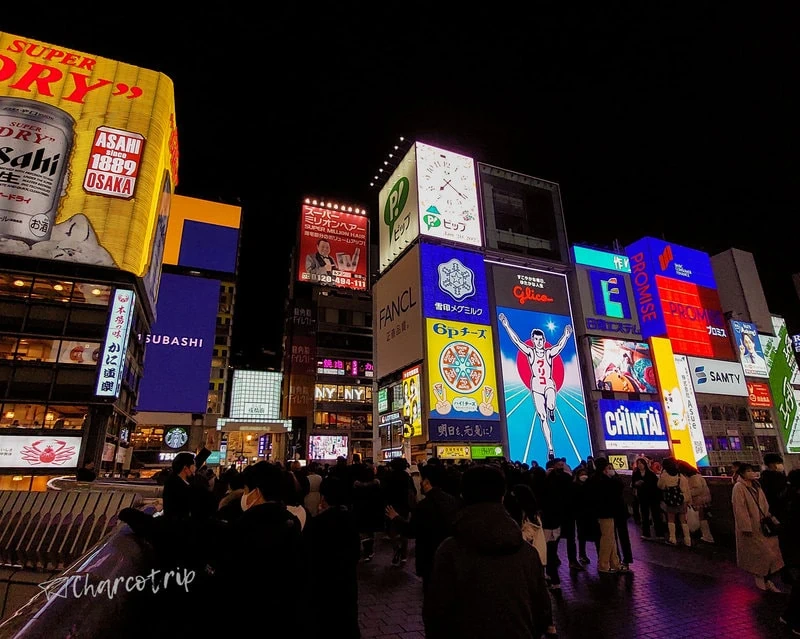
More cities
Japan is a beautiful country with much to explore beyond the major tourist destinations of Tokyo, Kyoto, and Osaka. To experience Japan’s natural beauty, head to Hokkaido, the northernmost island prefecture famous for its ski resorts and hot springs. In summer, visitors can walk in its natural parks or explore the colorful fields of flowers.
To learn more about Japanese history, visit Hiroshima. It is home to the Peace Memorial Park and Museum, which tells us about the atomic bombing that occurred during World War II. You can also take a ferry to the nearby island of Miyajima, where you can see the iconic “floating” torii gate of Itsukushima Shrine.
Itineraries to travel to Japan
We have had the opportunity to visit Japan several times, here we leave you the different itineraries that we have made to serve as a guide.
These do not consider the days that are used to go and return to take the plane, which are important when planning our activities.
Itinerary first time in Japan 8 days
For this itinerary, arrival was at Narita Airport in Tokyo and departure from Fukuoka Airport
| Day | City | Activities |
|---|---|---|
| 1 | Tokyo | Akihabara, Shibuya |
| 2 | Tokyo | Senso Ji, Imperial Garden, Yasukuni Shrine, Akihabara and maid café |
| 3 | Tokyo | Tocho Building in Shinjuku, Harajuku, Meiji Shrine, Omotesando |
| 4 | Nara | Transfer from Tokyo to Kyoto, Kōfuku-ji Temple, Deer park, Himuro Shrine, Tōdai-ji |
| 5 | Kyoto | Kinkaku Ji Temple, Ryōan Ji Temple, Ninna Ji Temple, Gion by night |
| 6 | Kyoto | Kimono rental, Yasaka Shrine and Murayama park, Kōdai Ji Temple, Kiyomizu Dera Temple, Gion neighborhood (by day), Porta Mall |
| 7 | Kyoto | Kyoto Tower, Fushimi Inari, Nishi Hongan Ji Temple, Sanjūsangen-dō, Kawaramachi shopping area |
| 8 | Hiroshima | Journey from Kyoto to Hiroshima, How to get to the Island of Miyajima, Island of Miyajima, A-Bomb Dome, Peace Memorial Park, Peace Memorial Museum |
Two days itinerary in Fukuoka
During our trip to Hong Kong we were able to take a break to really visit the city of Fukuoka, since on our first trip we only saw the train station and the airport.
If you want to see the details of the activities we did when visiting this city, here we tell you what to see in Fukuoka?
| Day | Activities |
|---|---|
| 1 | Tochoji Temple, Kushida Shrine, Fukuoka Tower, eating Shabu Shabu |
| 2 | Ohori Park, Fukuoka Castle Ruins, Canal City Mall, Tenjin Area, Eating at a Yatai |
6-day itinerary in and around Tokyo
| Day | City | Activities |
|---|---|---|
| 1 | Tokyo | Shinjuku |
| 2 | Tokyo | Ikebukuro |
| 3 | Tokyo | Japanese bride and groom, Odaiba |
| 4 | Tokyo | Seven Gods Tour in Asakusa, Akihabara |
| 5 | Kamakura | Kamakura Temples |
| 6 | Tokyo | Ghibli Museum, shopping in Tokyo, Tokyo SkyTree |
7-day itinerary in and around Tokyo
| Day | City | Activities |
|---|---|---|
| 1 | Tokyo | Senso-Ji and birthday Shabu Shabu |
| 2 | Tokyo | Tokyo Tower and Shibuya |
| 3 | Tokyo | Visit of temples and Akihabara |
| 4 | Tokyo | Ikebukuro |
| 5 | Yokohama | Yokohama Landmark Tower and ramen museum |
| 6 | Tokyo | Yanaka neighborhood |
| 7 | Tokyo | Five Lakes and Mount Fuji tour |
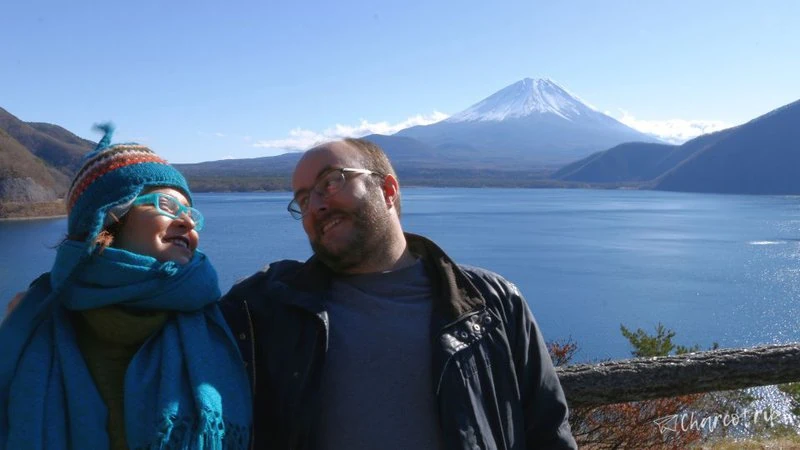
11-Day Osaka and Kyoto Itinerary
For this trip, we arrived at Osaka Kansai airport to depart from Tokyo Haneda airport.
| Day | City | Activities |
|---|---|---|
| 1 | Osaka | Abeno Harukas Building, Tsūtenkaku Tower and Shinsekai neighborhood |
| 2 | Osaka | Shitenno-ji Temple, Osaka Castle |
| 3 | Osaka | Naruto Park |
| 4 | Osaka | Suyimoshi Taisha Shrine, Namba Yasaka Shrine, dotonbori avenue in Namba and transfer to Kyoto |
| 5 | Kyoto | The bamboos of Arashiyama |
| 6 | Kyoto | Tō-ji Temple |
| 7 | Kyoto | Return to Fushimi Inari, Gion Corner |
| 8 | Kyoto | Higashi Hongan-ji Temple, train Kyoto-Tokyo |
| 9 | Tokyo | Hie Shrine, returning to Akihabara |
| 10 | Tokyo | Tokyu Hands, the infernal ramen, purchases in animate and bookoff |
| 11 | Tokyo | Shopping in donguri (Totoro), eating Totoro, don quijote |
18 day itinerary in Japan
Shortly after the Japanese borders reopened, we went to Japan again, this time visiting new cities.
| Day | City | Activities |
|---|---|---|
| 1 | Tokyo | Senso-Ji, Mori Tower |
| 2 | Tokyo | Ikebukuro |
| 3 | Nikko | Transfer Tokyo-Nikko, Futarasan Shrine, Taiyuin Temple |
| 4 | Nikko | Shinkyo Bridge, Tosho-gu Temple, Rinnoji Temple |
| 5 | Nagano | Zenkoji Temple |
| 6 | Nagano | Jigokudani Monkey Park |
| 7 | Osaka | Transfer Nagano-Osaka |
| 8 | Osaka | Isshinji Temple, Dotonbori Hike |
| 9 | Himeji | Himeji Castle, Koko-en Garden |
| 10 | Okayama | Korakuen Garden, Okayama Castle |
| 11 | Kobe | Walk through the city, eating Kobe beef |
| 12 | Osaka | Umeda Sky Building, Pokemon center |
| 13 | Nagoya | Nagoya TV Tower |
| 14 | Nagoya | Train museum |
| 15 | Tokyo | Shopping in Tokyo |
| 16 | Tokyo | Shopping in Tokyo |
| 17 | Tokyo | Omotesando, Pokemon Cafe, Pokemon center |
| 18 | Tokyo | Sakura Shrine, Niagara Curry, cinema in Tokyo |

Japan guide: gastronomy
When it comes to gastronomy, Japan is a foodie’s paradise. From sushi and ramen to tempura and yakitori, Japanese cuisine has something for everyone. And the best part? You don’t have to ruin yourself to enjoy some of the most delicious food the country has to offer.
A dish that you must try is, undoubtedly, the sushi. You will probably think that it is not necessary, since you have tried it in your country and there is nothing new to discover. This statement is precisely what makes it necessary for you to eat sushi in Japan: you will discover that although the sushi you can find in your country is good, in Japan it is on another level, “it’s the real thing!“. Whether you prefer raw fish or cooked options, there are countless variations of this iconic Japanese dish to choose from. Some popular types include nigiri (fish served over rice), maki (rolled), and temaki (hand-rolled cones).
Another must is the ramen. This bowl of noodle soup may seem simple at first glance, but its complex flavors will make your taste buds dance with joy. There are many variations of ramen depending on the region, but some common ingredients include pork broth, soy sauce, miso paste, and various toppings such as sliced pork belly and green onions. So go ahead and slurp it down, it’s considered polite in Japan!
Use this list of food options in Japan as a guide to get you started.
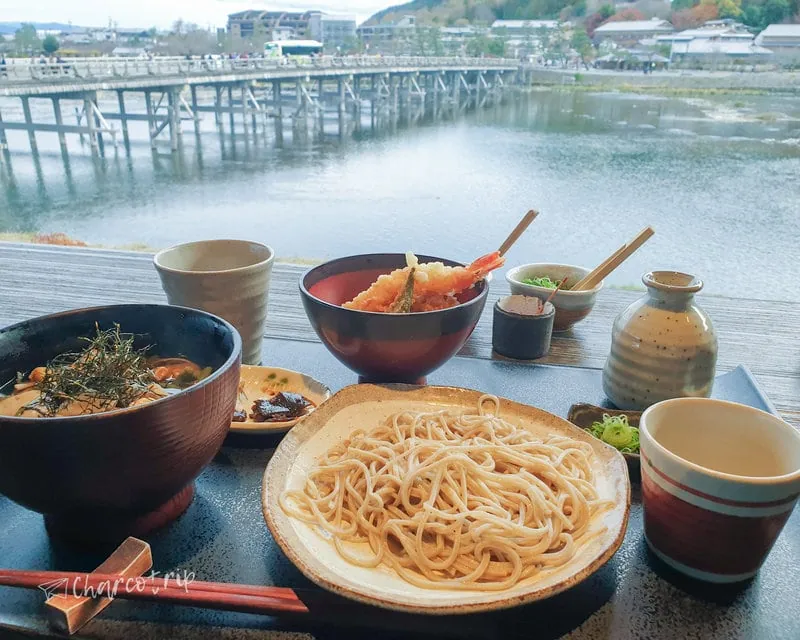
Japan guide: useful tips and recommendations
What things should you not do in Japan?
- You should not leave a tip.
- Not taking off your shoes where it is indicated to do so. As a general rule of thumb, if you see an area to leave your shoes, and you see everyone taking them off, do that too.
- Talking on the phone on the train, that is, in your seat. If you really need to make that call, there is a designated area between the cars.
- Do not cross the street at a red light. In Japan, you are expected to obey traffic signs. Crossing the street at a red light can be dangerous and is considered disrespectful to others.
- Stick the chopsticks into the rice.
Recommended experiences
- Go to an onsen. It’s hard to overcome the fear of being naked in front of other people, but once you understand what Japanese culture is like, I assure you there is no place for shame.
- Wear a kimono.
- Visit a cat cafe.
- Visit the parks of your favorite characters, such as the Naruto Park or the Moomin Park.
- Start your collection of stamps and goshuin.
I will tell you more curious facts about Japan that will surprise you
Japan Guide: Shopping
Don’t forget Tax Free
This guide to Japan would be incomplete if I didn’t tell you about an ally when it comes to shopping in the country: tax-free.
The Tax Free mechanism operates in stores that have the Tax-Free Shop logo:
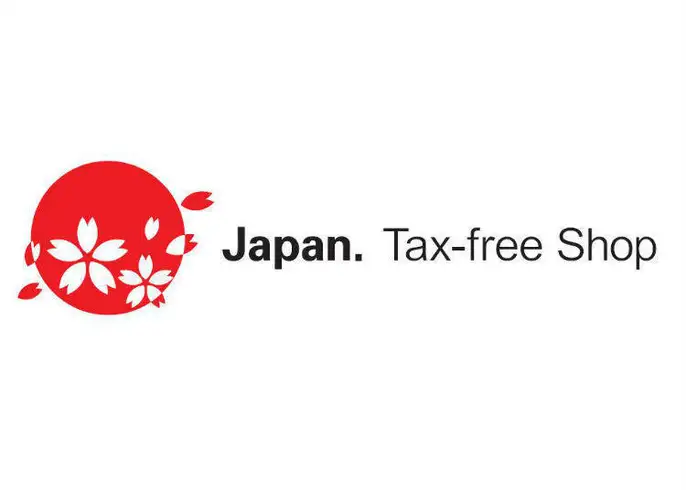
If you have any doubts, ask the employees before paying to confirm that your purchases fall under this program. Usually, you have to buy at least 5000 yen worth of items in the same category, for example, clothes and food are in two separate categories.
When it’s time to pay, they’ll ask for your passport and will usually place items in sealed bags, so you don’t consume them while you’re in Japan. The idea is that you will not pay VAT, but you must take them back home with you.
Knowing this, a good idea is to group your purchases so that you reach 5,000 yen in a single store, thus saving VAT. We usually leave the last few days, which are almost always in Tokyo, to make these purchases.
Which souvenirs should you bring from a trip to Japan?
This, of course, will depend on your personal tastes, but here is a guide to the most popular souvenirs to bring back from Japan:
- Memorabilia: apart from the classic magnets, postcards and thus, consider purchasing items as original and that will make you remember your visit forever as the Gotochi Kitty.
- Ceramics: Japan is well-known for its ceramics, including items such as bowls, plates, teapots, and vases.
- Stationery: Japan has a wide variety of high-quality stationery, including writing paper, sticky notes, envelopes, pencils, and pens. In addition, you can also find beautiful greeting cards and postcards with unique designs. It doesn’t matter if you don’t understand Japanese, they are cute!
- Kimonos and yukatas: if you want to take an exceptional souvenir, you can consider buying a kimono or yukata, although prepare your wallet, since they are expensive.
- Food: Japan is known for its cuisine, so you might consider bringing some traditional sweets like the famous Kit Kats with unique flavors, mochis, senbei (rice crackers), or even sakura dango (rice balls filled with sweet bean).
- Electronics: The country is known for its advanced technology, so you may consider bringing some electronic gadgets such as cameras, audio devices, game consoles, and smartphone accessories.
- Figures of your favorite characters: take advantage of your time in places like Akihabara, to get items from your favorite series, as I did with my Naruto figures.
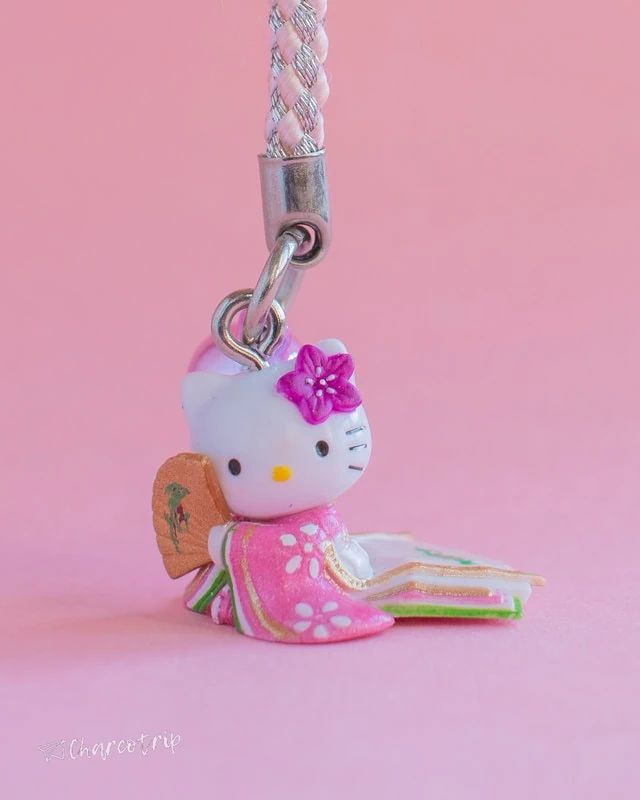
Japan Guide: Dare to go!
In conclusion, Japan is a wonderful place to explore. From its beautiful scenery, delicious cuisine, and welcoming people, this country has something for everyone. Whether you’re planning a solo trip or a family vacation, we hope our comprehensive guide has provided you the information you need to travel to Japan on your own and make the most of your experience.
Take the time to try different things, experience the culture and customs, and find new ways of seeing the world.
I assure you that you will want to return!
Some of the links in this article include affiliate links. This means that if you buy a product listed here by following these links, we'll receive a commission. The use of this link does not increase the final price for you and thus helps us to keep our blog alive.

